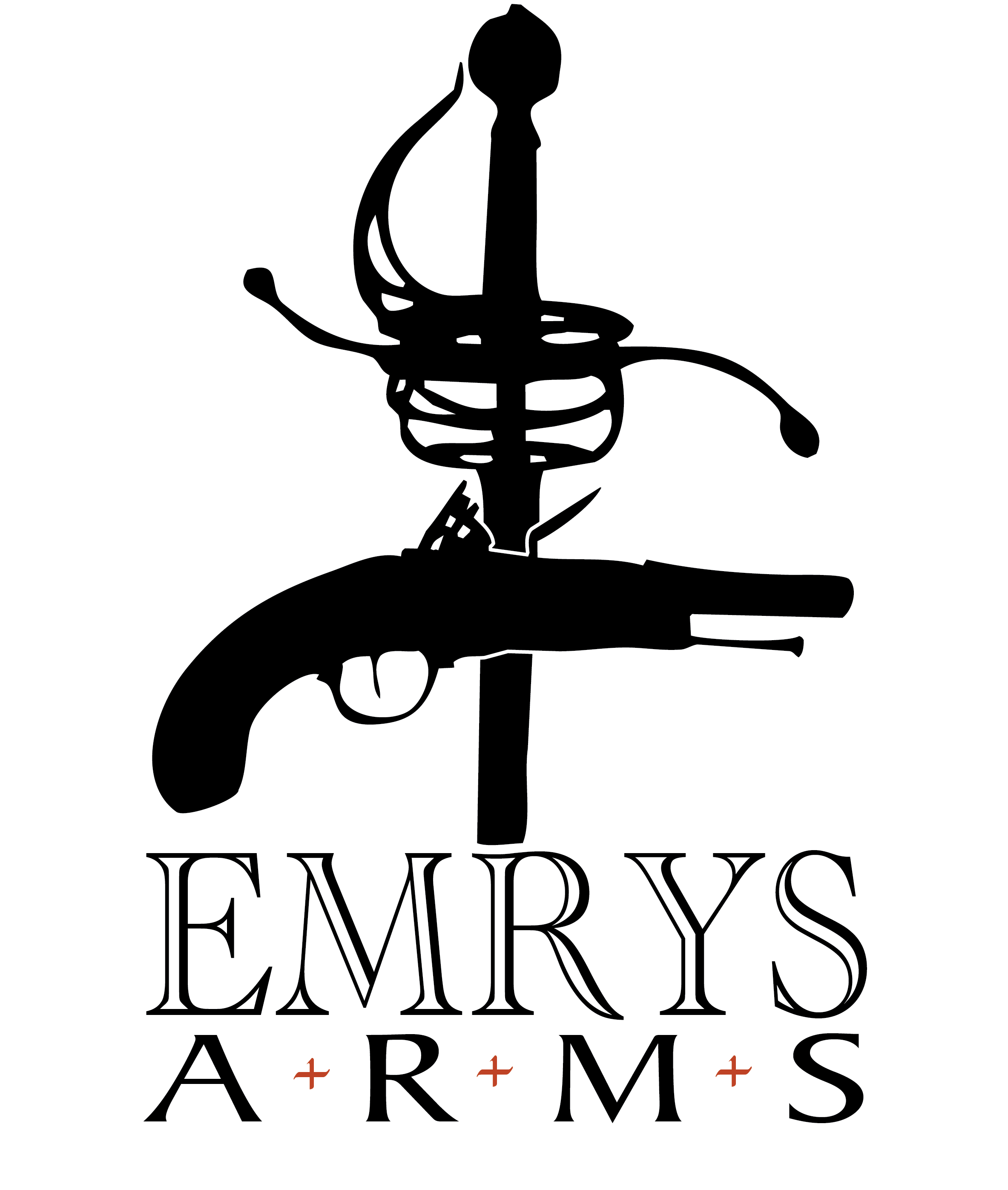| Collection #: | 2020.004 |
|---|---|
| Type: | Infantry Officer |
| Nationality: | British |
| Pattern: | 1796 |
| Date: | 1801 - 1808 |
| Hilt: | Gilt Brass ~ Grip w/ Silver Sheet |
| Blade Length: | 82.8cm (32 1/2") |
| Blade Width: | 2.8cm (1 1/8") |
| Overall Length: | 99.4cm (39 1/8") |
| Maker: | J.J. Runkel ~ Solingen |

A well used version of this classic pattern which came out of Hampton, New Brunswick. The guard components while worn, with much of the gilding rubbed away, are sturdy. The hilt overall twists slightly around the blade when held and turned. The folding shell guard locks solidly into place with both shells angled up slightly to protect the hand.
While some may pass over this example in less than stellar condition, it has a few unique features. For one instead of having silver twist wire around the grip, it has silver sheet meant to simulate silver wire. Was this a cheaper option? More expensive option? Or just a difference in craftsman’s preference? We may never know, but it is interesting to see it as a remnant in order to see how it integrated into the wood ridges of the grip.
The second unique feature to this example is the way the folding guard is constructed. The other three examples I have, hinge around a single long pin (for lack of a better term) holding the two pieces together. This example has the same pin but with what I would describe as a ball type joint. As the guard is folded up, the ball gradually slides under the base of the guard causing resistance as the tension builds and then it virtually snaps into place. This causes it to be held quite firmly in place. There is also the number “12” located on the folding guard next to the ball joint (see image below). As I have not seen this before, nor have I come across it in any literature, it is hard to determine what the number refers to.
The regulation blade is darkened with age and is covered in numerous engravings. Any blueing or gold gilt that there might have been is long gone, but the engravings are quite crisp. The right side of the blade begins with a small decoration at the forte and then floral engravings; moves next to GR (for King George III) with a crown. It proceeds to a trophy of arms consisting of a drum, cannon, spear with what appears to be a basket hilted sword going through the middle. The right side then concludes with another floral depiction. The left side starts off with a reflection of the right side engraving at the forte and then moves to an image which I am unable to identify – see the image below. It then moves to the royal coat of arms in use from 1801 – 1816. Next is another floral display followed by another floral display with what appears to be ribbons. This is the extant of the markings to this sword
Finally, we may also narrow down the date of manufacture of this specimen by various clues. While this exact pattern of sword was introduced in 1796, with perhaps a few pre-1796 as the pattern was being established it extended, until roughly the end of the first quarter of the 19th century as the 1822 pattern was introduced and officers gradually changed over. For one, we can tell by the 1801 – 1816 coat of arms that it has to be at least 1801. That is doubly supported by the spelling of ‘Solingen’ on the spine of the blade from ‘Sohlingen’ – the ‘h’ was dropped around 1800. On the end date we also know that “Runkel is listed in the Cutlers’ Company’s list as still being in business in 1808 but that is the last record known of him in the United Kingdom” (Richard Dellar, The British Cavalry Sword 1788 – 1912, page 276. In a nutshell, Napoleon was in control of Europe and Runkel imported his blades from Germany. When exports of blades was prohibited to everyone except French allies, Runkels supplies dried up. So we can comfortably date the manufacture of this sword to 1801 -1808.
We use cookies to improve your experience on our site. By using our site, you consent to cookies. Enjoy the cookies...they're delicious...
Websites store cookies to enhance functionality and personalise your experience. You can manage your preferences, but blocking some cookies may impact site performance and services.
Essential cookies enable basic functions and are necessary for the proper function of the website.
Statistics cookies collect information anonymously. This information helps us understand how visitors use our website.
Google Analytics is a powerful tool that tracks and analyzes website traffic for informed marketing decisions.
Service URL: policies.google.com (opens in a new window)

